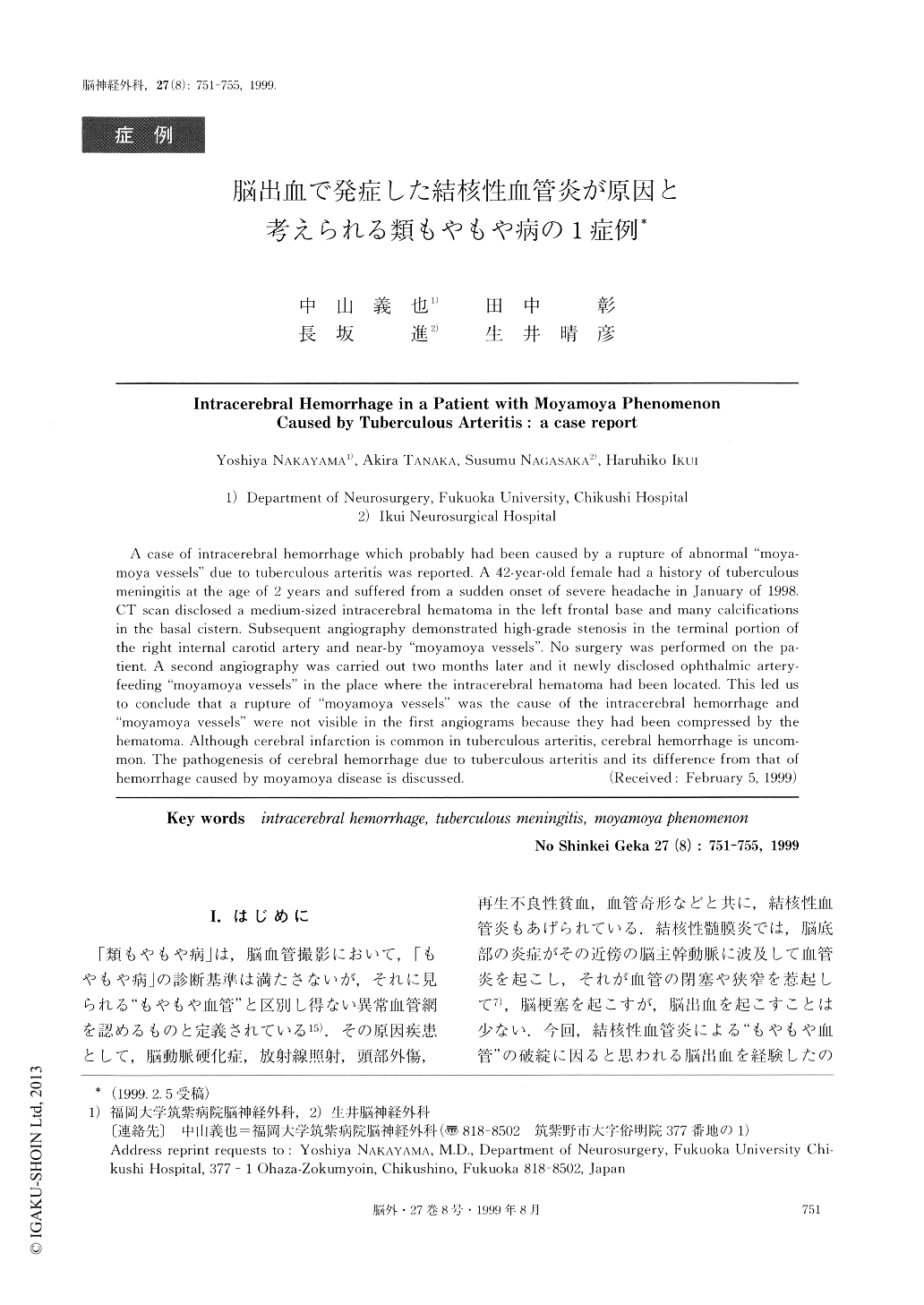Japanese
English
- 有料閲覧
- Abstract 文献概要
- 1ページ目 Look Inside
I.はじめに
「類もやもや病」は,脳血管撮影において,「もやもや病」の診断基準は満たさないが,それに見られる“もやもや血管”と区別し得ない異常血管網を認めるものと定義されている15).その原因疾患として,脳動脈硬化症,放射線照射,頭部外傷,再生不良性貧血,血管奇形などと共に,結核性血管炎もあげられている.結核性髄膜炎では,脳底部の炎症がその近傍の脳主幹動脈に波及して血管炎を起こし,それが血管の閉塞や狭窄を惹起して7),脳梗塞を起こすが,脳出血を起こすことは少ない.今回,結核性血管炎による“もやもや血管”の破綻に因ると思われる脳出血を経験したので,その発生機序や「もやもや病」における脳出血との違いについて考察を加える.
A case of intracerebral hemorrhage which probably had been caused by a rupture of abnormal “moya-moya vessels” clue to tuberculous arteritis was reported. A 42-year-old female had a history of tuberculousmeningitis at the age of 2 years and suffered from a sudden onset of severe headache in January of 1998.CT scan disclosed a medium-sized intracerebral hematoma in the left frontal base and many calcificationsin the basal cistern. Subsequent angiography demonstrated high-grade stenosis in the terminal portion ofthe right internal carotid artery and near-by “moyamoya vessels”. No surgery was performed on the pa-tient. A second angiography was carried out two months later and it newly disclosed ophthalmic artery-feeding “moyamoya vessels” in the place where the intracerebral hematoma had been located. This led usto conclude that a rupture of “moyamoya vessels” was the cause of the intracerebral hemorrhage and“moyamoya vessels” were not visible in the first angiograms because they had been compressed by thehematoma. Although cerebral infarction is common in tuberculous arteritis, cerebral hemorrhage is uncom-mon. The pathogenesis of cerebral hemorrhage clue to tuberculous arteritis and its difference from that ofhemorrhage caused by moyamoya disease is discussed.

Copyright © 1999, Igaku-Shoin Ltd. All rights reserved.


